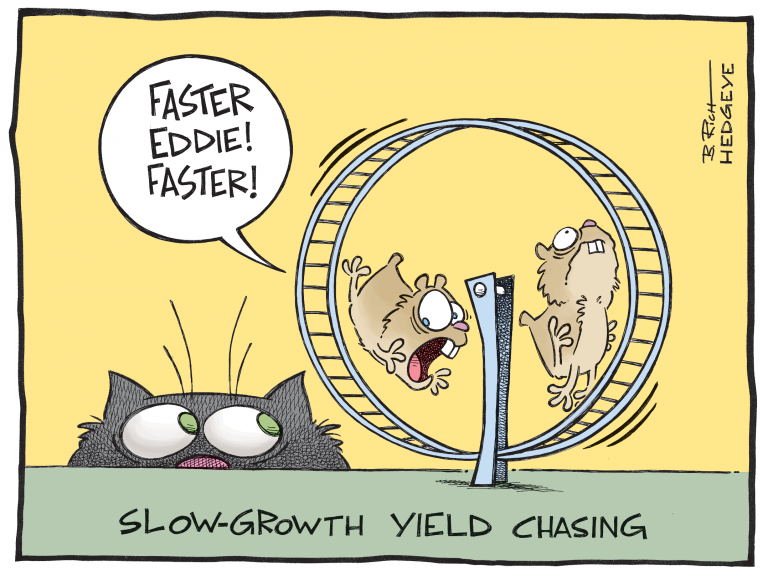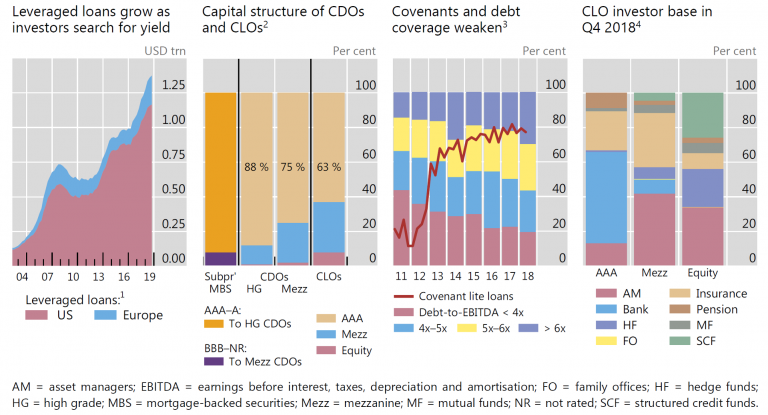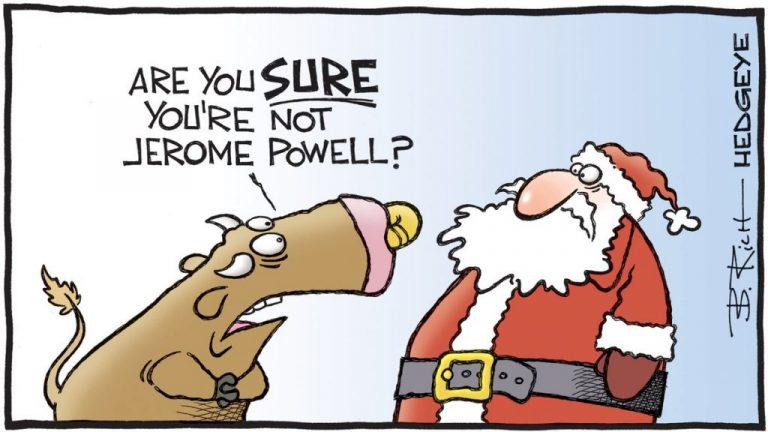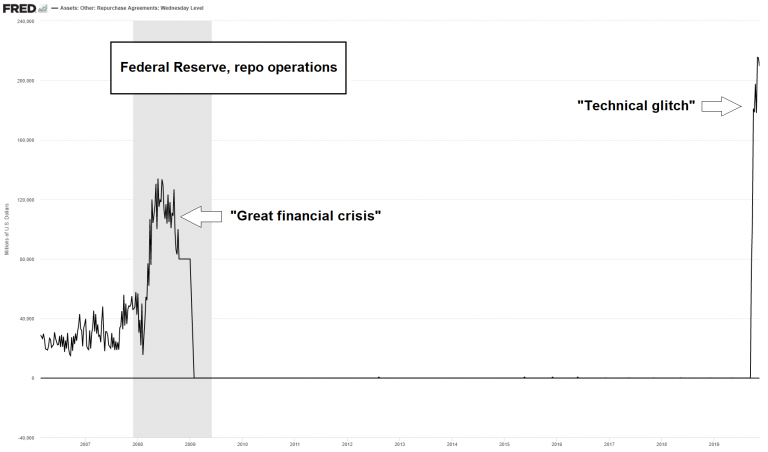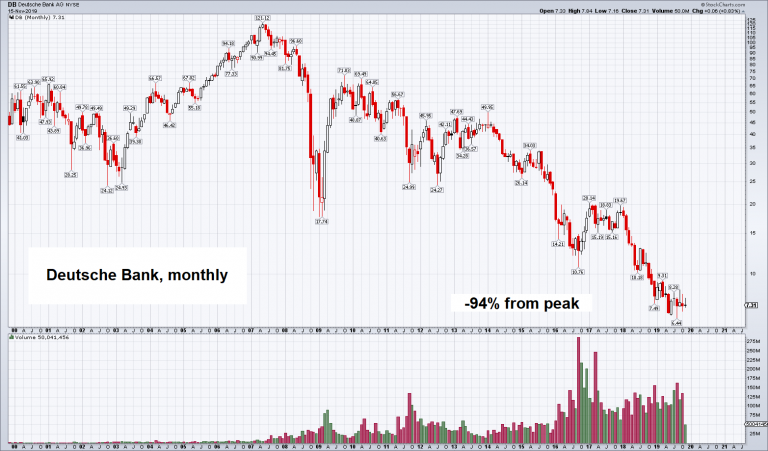Is The Fed Secretly Bailing Out A Major Bank?
Authored by EconomicPrism’s MN Gordon, annotated by Acting-Man’s Pater Tenebrarum,
Prettifying Toxic Waste
The promise of something for nothing is always an enticing proposition. Who doesn’t want roses without thorns, rainbows without rain, and salvation without repentance? So, too, who doesn’t want a few extra basis points of yield above the 10-year Treasury note at no added risk?
The yield-chasing hamster wheel… [PT]
Thus, smart fellows go after it; pursuing financial innovation with unyielding devotion. The underlying philosophy, as we understand it, is that if risk is spread thin enough it magically disappears. In other words, the solution to pollution is dilution.
With this objective, new financial products are fabricated into existence. The risk free rewards of several extra basis points are then packaged up into debt instruments and sold off to pension funds and institutional investors. The search for yield demands it.
Yet as an economic expansion progresses, especially one that has been extended and distorted with the Fed’s cheap credit, these derived financial securities are polluted with more and more toxic waste. Spreading the risk ultimately pollutes the entire pool of liquidity.
At this moment in the business cycle, after a lengthy bull market in stocks and bonds, countless manifestations of the greater fool theory have bubbled up to the surface. Bonds with negative yields epitomize this. Buyers accept a guaranteed coupon loss with the hopes of scoring capital appreciation as yields fall. But when yields rise, it is game over.
German Bund futures contract, weekly. The recent blow-off and subsequent reversal illustrates the convexity effect on bond prices… [PT]
Of course, the greater fool theory extends much deeper and wider than negative yielding debt. It also extends to the polluted world of corporate debt…
Wreckage from the Past
The progression of a credit crisis often starts with an initial shock, which is then followed by a much deeper revelation. This initial shock also serves as a turning point for banks and financial institutions and their attitudes towards risk. The promise of something for nothing turns to toxic waste.
Financial innovation always works great until the precise moment it doesn’t. And, unfortunately, financial innovation has taken its wreckage from the past and applied it to the present. Here we turn to the Bank for International Settlements (BIS), September 2019 Quarterly Review, for edification:
“Collateralized debt obligations (CDOs) that invested in subprime mortgage-backed securities (MBS) were at the center of the Great Financial Crisis (GFC). The issuance of subprime CDOs ceased after the GFC, but other forms of securitization have grown substantially – in particular, collateralized loan obligations (CLOs). CLOs invest mainly in leveraged loans, i.e. bank loans to firms that are highly indebted, have high debt service costs relative to earnings and are typically rated below investment grade.
“The leveraged loan market has surged in recent years to roughly $1.4 trillion outstanding, of which about $200 billion is denominated in euros and the rest in US dollars. This rapid expansion has been accompanied by the securitization of leveraged loans into CLOs. As of June 2019, over 50 percent of outstanding leveraged loans in US dollars and about 60 percent of those in euros had been securitized through CLOs.
“The rapid growth of leveraged finance and CLOs has parallels with developments in the US subprime mortgage market and CDOs during the run-up to the GFC […] including some that could give rise to financial distress. These include the deteriorating credit quality of CLOs’ underlying assets; the opacity of indirect exposures; the high concentration of banks’ direct holdings; and the uncertain resilience of senior tranches, which depend crucially on the correlation of losses among underlying loans.”
Some data on leveraged loans and CLOs from the BIS. Although overall default rates on leveraged loans remain fairly low, there were recently a number of worrisome developments with respect to speculative grade corporate borrowers. For example, according to S&P the number of so-called “weakest links” (defined as issuers rated ‘B–’ or lower by S&P Global Ratings with negative outlooks or ratings on credit watch with negative implications) has recently jumped to the highest level since November 2009. The default rate of “weakest links” is nearly 8 times greater than that of the high-yield universe as a whole. [PT]
What to make of it?
Is the Fed Secretly Bailing Out a Major Bank?
By now you are probably well aware of the trouble in the overnight funding market. We have touched on it several times. In short, sometime between Monday night and Tuesday morning September 16/17 the overnight repurchase agreement (repo) rate hit 10 percent. Short-term liquidity markets essentially broke.
After several technical glitches, the Fed executed its first repo operation in a decade – $53 billion – to keep the interbank funding market flowing. Since then, overnight repo operations have become a near daily occurrence. However, these daily operations have ballooned to the order of over $120 billion and are being maintained indefinitely.
Apparently, that is indeed who he is… [PT]
Despite the Fed’s efforts, and the efforts of professional economists to sweep concerns under the rug, something is clearly broken. Why else would $120 billion in repetitive overnight repo operations be needed to control interest rates?
Could it be, just maybe, the Fed is secretly bailing out a major U.S. or foreign bank, or some other financial institution? Maybe. Maybe not. But this week the New York Fed stated it would not disclose which banks are receiving repo cash for at least two years. If this was disclosed now, an old fashioned bank run would ensue.
Federal Reserve repo operations, then and now: it does give one pause… [PT]
In the meantime, with a little imagination, today’s problems in the repo market could be a warning that CLOs are turning to toxic waste, and, as a result, are developing into the next financial crisis. While it is still unclear, it is very possible that a bank or financial institution did not have sufficient high quality collateral and was frozen out of private repo markets. Hence, the dramatic rate spike followed by Fed supplied liquidity.
The takeaway from all this: Don’t be surprised if a large bank goes belly-up with little advance notice.
Deutsche Bank, monthly – needless to say, this is not a happy chart. [PT]
On an unrelated note, Deutsche Bank flushed a net loss of 832 million euros – that’s $924 million – down the toilet during the third quarter of 2019.
Tyler Durden
Sun, 11/17/2019 – 12:30
via ZeroHedge News https://ift.tt/32OlKDu Tyler Durden
